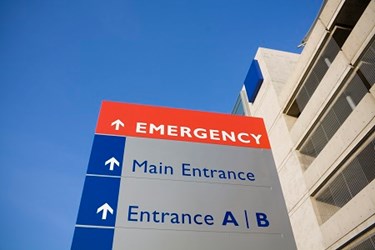The Missing Technology Component Urgent Care Clinics Require
By Katie Lange, Motus

Urgent care clinics remain relatively new to the healthcare industry. But, their rapid growth rate? It’s nothing short of impressive. According to Laurel Stoimenoff, CEO of the Urgent Care Association (UCA) and co-author of the 2018 report “The Essential Role of the Urgent Care Center in Population Health,” the number of urgent care clinics has increased from 6,946 in 2015 to 8,285 as of June 2018. Urgent care clinics receive nearly 90 million patients annually, or more than 29 percent of all primary care visits in the U.S., and nearly 15 percent of all outpatient physician visits. Furthermore, as an $18 billion industry, experts estimate the urgent care market will grow 5.8 percent this year.
There are numerous factors driving the continued growth of urgent care clinics. For instance, the model can provide physicians greater work/life balance, as working in urgent care doesn’t require an on-call schedule, being accountable to specific patients or working nights and every weekend. On the patient side, the model can better meet demand, convenience and cost needs. In fact, millennials are particularly enthused about urgent care clinics, primarily because the model supports their desire for more efficient, transparent and digital experiences. Urgent care momentum also can be attributed to individuals living in rural areas who don’t have reasonable access to primary care physicians and major hospitals, and to individuals without health insurance who are paying out-of-pocket (urgent care costs are usually lower).
An Overlooked Financial Reality
Despite its undeniable growth and broadening support base, urgent care clinics can introduce financial complications for its workers. Namely, mileage reimbursement can become an unwieldy and potentially unfair process for the district or regional managers who are responsible for continually stocking urgent care clinics with necessary products, equipment and supplies.
Some urgent care clinics provide company cars to their employees, as having the option to brand-wrap a company-owned vehicle can offer invaluable mobile advertising, enhanced brand imagery and greater community visibility. However, many smaller urgent care clinics rely on their employees to drive their personal vehicles for any stocking-related tasks. This means the clinic is responsible for reimbursing their employees with the costs associated with driving for work, as mandated by different state labor regulations (such as California’s Labor Code Section 2802(a)).
Mileage Reimbursement Complications
The Internal Revenue Service (IRS) recently released its standard mileage rates for 2019, which allow urgent care clinics to fairly reimburse their employees for the work-related miles driven on their personal vehicles. These rates also help employees calculate the deductible costs of operating a vehicle for business purposes. However, with the new rate standard at 58 cents per mile (which marks a 6.4 percent increase from 2018’s rate), some urgent care clinics may balk at the increase and choose to pay below the full standard. Worse, some clinics may not even have a formal mileage reimbursement program in place and resort to an ad hoc amalgam of company car, car allowance and mileage reimbursement programs that aren’t sufficiently enforced.
Currently, it’s not illegal to pay below the IRS business mileage standard. However, it’s important to acknowledge that employees have the option to sue based on labor regulations for the business miles they are rightfully owed. In fact, RadioShack, Starbucks and Uber should serve as cautionary tales and incite urgent care clinics to prevent similarly expensive payouts and lawsuits by implementing cloud-based mileage tracking and reimbursement technologies. Also, while it’s not as immediately extreme a scenario, urgent care clinics could also suffer from losing talent to competitors if they miscalculate costs and under-reimburse their employees.
Automated Technology Benefits
In an effort to overcome reimbursement complications, many urgent care clinics assume the onus is on them and/or their employees to manually keep detailed records of each trip made by an employee and regularly process any related expense reports. Thankfully, this tedious, rather antiquated approach is no longer necessary. By leveraging cloud-based mileage tracking and reimbursement technology, urgent care clinics can automate the process of tracking business mileage and free their employees from having to conduct manual tasks while in the field. In addition to eliminating inaccuracies and tedious processes, such technology also can provide urgent care clinics with valuable data. This data allows them to pinpoint which deliveries are taking the most time or which require more attention -- all of which enables urgent care clinics to make better business decisions and maximize their employees’ time.
Continuing to rely on antiquated methods of doing business (e.g., manual reporting, paper receipts, etc.) results in healthcare organizations overspending about 23 percent on mileage reimbursements. This is largely because paper calculations account for what is “reported,” as opposed to technology that captures actual mileage in real-time. Urgent care clinics should not shy away from automated mileage and reimbursement technology out of apprehension. Especially when embracing these practices can help them maintain the industry’s rapid growth trajectory. In doing so, they stand to streamline their operational processes, improve their employee satisfaction levels and make better business decisions.
About The Author
Katie Lange is a Senior Sales Executive for Motus.
